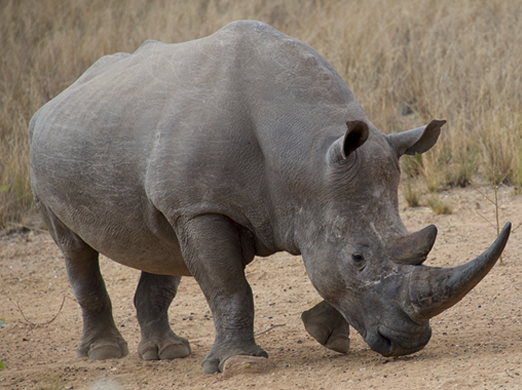Latest News
IBM Helps Protect Endangered African Rhinos with IoT Technology

September 22, 2017 | Written by: Francois Spruyt Welgevonden Game Reserve in South Africa features 37,000 hectares (the equivalent of just over 90 thousand acres) of diverse landscapes and...
September 22, 2017 | Written by: Francois Spruyt
Welgevonden Game Reserve in South Africa features 37,000 hectares (the equivalent of just over 90 thousand acres) of diverse landscapes and geology, and is home to much of the African continent’s stunning wildlife. South Africa is also home to most of the world’s remaining rhinos.
At Welgevonden you will also find something which, at first glance, may seem a quite out of place. Words like IoT, cloud and predictive analytics are typically outsiders at a game reserve, but they belong in Welgevonden for a very good reason – each is part of our attempt to stay one step ahead of poachers and help save what’s left of our country’s dwindling rhino population.
Consider these numbers:
- Over the past decade, more than 7,000 rhinos were killed across the African continent
- In 2016, more than 1,000 were killed in South Africa alone
- If this rate continues, some say, the rhino could become extinct in less than a decade
Recent statistics suggest that the increase in the rate of rhino poaching has stabilized, but the absolute number being killed is still dreadful. And amid increased collaboration between the SA government and the private sector to fight this war, this ‘stabilization’ has come at an outrageous cost to the country. And it is a war in very real terms – more heavily armed poachers that have to be confronted by more heavily armed anti-poaching units.
How the IoT can protect rhinos from poachers
For several years, we at Welgevonden have been working on smarter solutions to curtail this scourge. Together with our partners, we now believe that the fate of these rhinos may not rest on the presence of more guns, but on something far more powerful: data. That’s where IBM Internet of Things (IoT), cloud and other components become part of a winning formula.
In recent years, Wageningen University in the Netherlands and Welgevonden conducted a study that opened many eyes to these new alternatives to protect our rhino friends. What the research found is that prey-animals react differently, depending on the type of threat they encounter, whether it’s coming from predators such as a lion or a human nearby, who might be a reserve employee, a tourist or a poacher.
This research fueled the idea of harnessing IBM Cloud, Internet of Things (IoT) and predictive analytics technologies to combat the poaching of endangered rhinos at Welgevonden. These new technologies are aimed at making poaching predictable and therefore nearly impossible – effectively replacing guns with IoT technology, predictive analytics and collars with embedded sensors that are placed on typical prey-animals, including zebra, wildebeest, eland and impala – but not the rhinos.
Following the sentinels
Rhinos are excluded to ensure that their precise whereabouts remain unknown. So how can these rhinos be protected if they are not being tracked? Rather than follow the rhino, all eyes are focused on observing how the prey-animals respond to disturbances, including the presence of potential poachers, versus a tourist or an employee traveling across the reserve in a vehicle. Through IBM’s IoT platform, teams monitor and collect sensor-information related to location, movement pattern, direction and average speed of travel of these animals; and are using this movement and other data to create rule-based patterns, or algorithms, built on the prey-animals’ response to perceived threats.
As a result, animals such as the Zebra become sentinels to their rhino brethren, and their response patterns trigger an early warning system that allows the reserve to proactively respond as soon as poachers are detected, long before any attack on a rhino might occur. This idea of a proactive, predictive system is something that existing technology-based solutions have been unable to provide, and for Welgevonden Game Reserve, it represents the next level of defence.
Based on early results, the IoT may be the answer to an age-old problem, one that could remove threats that have haunted rhinos for years. But it doesn’t end there. These same solutions will protect other African animals that are targeted by poachers, such as the African elephant, lion and other predators. It could also be used to help the plight of other animals threatened by poaching all over the globe.